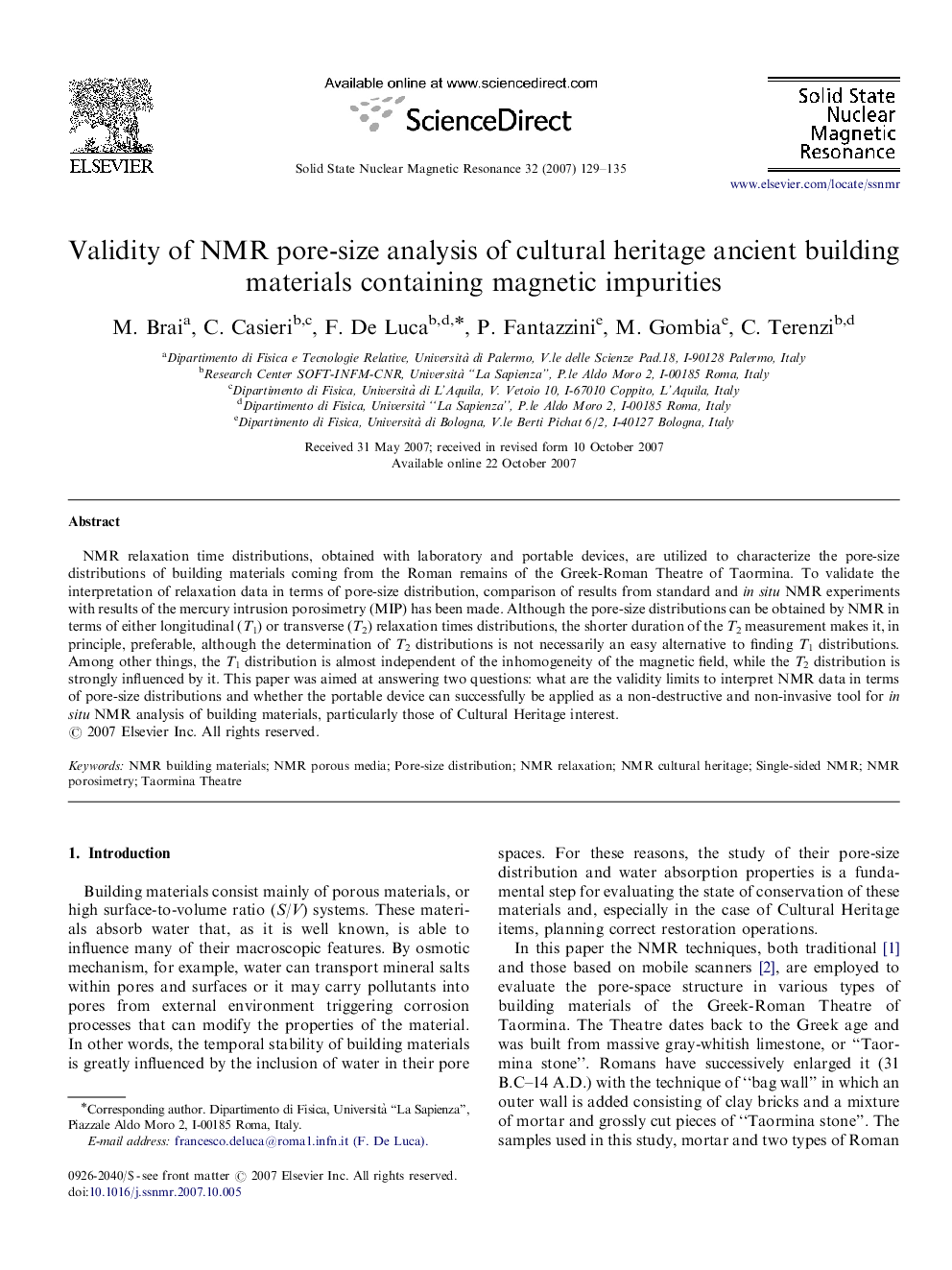| Article ID | Journal | Published Year | Pages | File Type |
|---|---|---|---|---|
| 5420814 | Solid State Nuclear Magnetic Resonance | 2007 | 7 Pages |
Abstract
NMR relaxation time distributions, obtained with laboratory and portable devices, are utilized to characterize the pore-size distributions of building materials coming from the Roman remains of the Greek-Roman Theatre of Taormina. To validate the interpretation of relaxation data in terms of pore-size distribution, comparison of results from standard and in situ NMR experiments with results of the mercury intrusion porosimetry (MIP) has been made. Although the pore-size distributions can be obtained by NMR in terms of either longitudinal (T1) or transverse (T2) relaxation times distributions, the shorter duration of the T2 measurement makes it, in principle, preferable, although the determination of T2 distributions is not necessarily an easy alternative to finding T1 distributions. Among other things, the T1 distribution is almost independent of the inhomogeneity of the magnetic field, while the T2 distribution is strongly influenced by it. This paper was aimed at answering two questions: what are the validity limits to interpret NMR data in terms of pore-size distributions and whether the portable device can successfully be applied as a non-destructive and non-invasive tool for in situ NMR analysis of building materials, particularly those of Cultural Heritage interest.
Related Topics
Physical Sciences and Engineering
Chemistry
Physical and Theoretical Chemistry
Authors
M. Brai, C. Casieri, F. De Luca, P. Fantazzini, M. Gombia, C. Terenzi,
